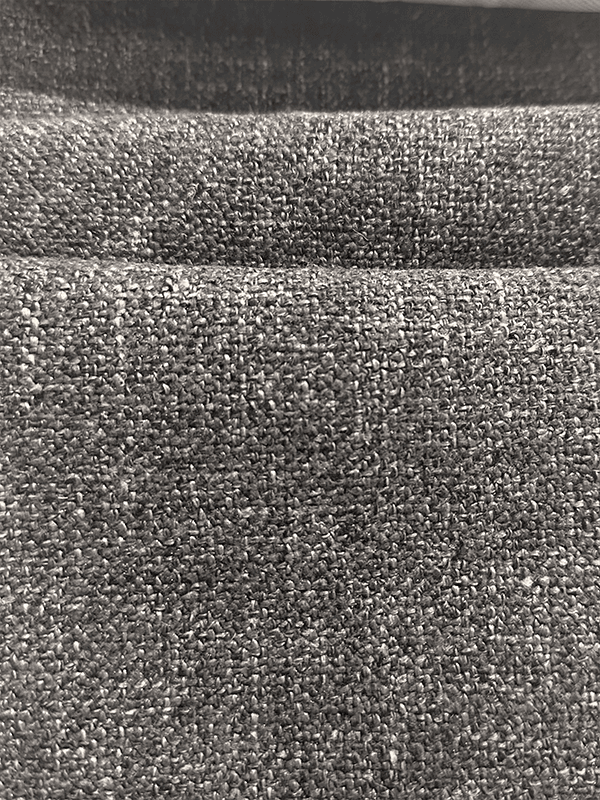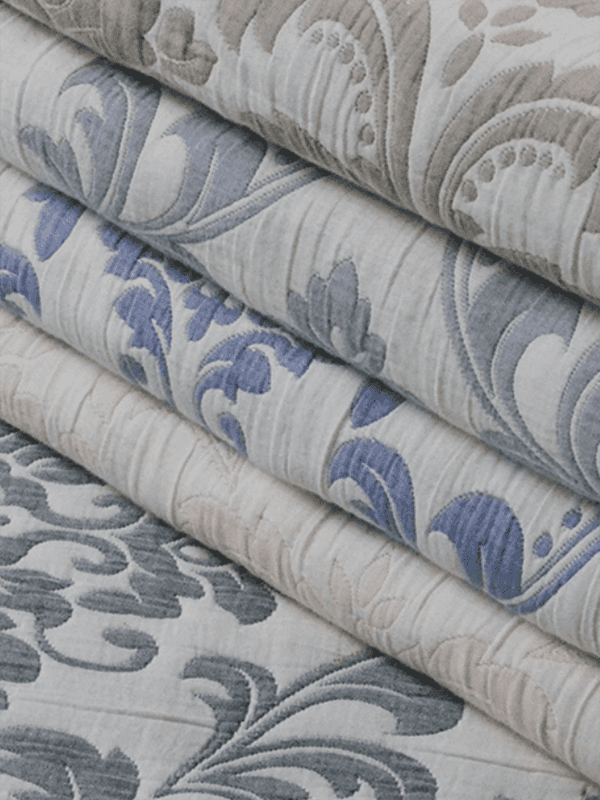Home textile fabrics play a crucial role in determining the comfort, aesthetics, and functionality of living spaces. From bedding and curtains to upholstery and decorative textiles, the choice of fabric impacts not only the appearance but also the tactile experience of the user. Among the most critical properties for home textiles are softness and breathability. Softness affects the feel against the skin, while breathability governs air circulation, moisture management, and thermal comfort.
Different types of fabrics—natural fibers, synthetic fibers, and blends—exhibit varying performance in these areas due to their fiber structure, weave, and finishing treatments. Understanding these differences is essential for selecting the most suitable materials for specific applications in homes. This article explores how various home textile fabrics perform in terms of softness and breathability, their advantages and limitations, and practical applications.
1. Understanding Softness and Breathability
Softness
Softness is the tactile quality of a fabric and is influenced by factors such as:
- Fiber diameter: Finer fibers produce a smoother, softer surface.
- Weave or knit structure: Dense or brushed fabrics can feel softer.
- Finishing processes: Treatments such as mercerization, sanding, or calendaring enhance the hand feel.
Softness is particularly important for fabrics that come in direct contact with skin, such as bed sheets, pillowcases, blankets, and sofas.
Breathability
Breathability refers to the ability of a fabric to allow air and moisture vapor to pass through. It affects:
- Thermal comfort: Facilitates heat dissipation and prevents overheating.
- Moisture management: Helps keep skin dry by allowing sweat to evaporate.
- Indoor air quality: Reduces mold and mildew risks in damp environments.
The breathability of a fabric depends on fiber type, yarn structure, and fabric density. Natural fibers are generally more breathable, while synthetic fibers require specific engineering to achieve similar performance.
2. Natural Fibers
2.1 Cotton
Softness: Cotton is naturally soft due to its fine, hollow fibers. Combed and carded cotton further enhances softness, making it ideal for bedding and apparel.
Breathability: Highly breathable because of its porous fiber structure. Cotton absorbs moisture readily, allowing for comfortable thermal regulation.
Applications: Bed sheets, pillowcases, curtains, upholstery.
Pros: Soft, hypoallergenic, breathable.
Cons: Prone to wrinkling, may shrink when washed, slower to dry than synthetics.
2.2 Linen
Softness: Linen fibers are coarser than cotton, providing a textured feel. However, high-quality linen softens over time and washes, gaining a natural drape.
Breathability: Exceptional breathability; linen wicks moisture efficiently and dries quickly, keeping users cool in warm climates.
Applications: Summer bedding, tablecloths, drapes, upholstery.
Pros: Lightweight, breathable, durable.
Cons: Initially rougher than cotton, prone to wrinkling.
2.3 Silk
Softness: Silk is renowned for its luxurious smoothness and delicate sheen. Its fine filaments create a soft surface that feels gentle against the skin.
Breathability: Silk offers moderate breathability. While it allows air circulation, its moisture absorption is lower than cotton or linen, providing a balance of warmth and coolness.
Applications: Decorative pillows, luxury bed sheets, drapery.
Pros: Smooth, hypoallergenic, elegant appearance.
Cons: Expensive, requires delicate care, can degrade under prolonged sunlight.
2.4 Wool
Softness: Wool varies in softness depending on fiber diameter; merino wool is extremely soft, whereas coarse wool may feel itchy.
Breathability: Highly breathable and thermoregulating. Wool absorbs moisture without feeling wet and releases it gradually.
Applications: Blankets, throws, upholstery, rugs.
Pros: Warm, breathable, moisture-wicking.
Cons: Can be coarse, requires gentle cleaning, may shrink.
3. Synthetic Fibers
3.1 Polyester
Softness: Standard polyester is less soft than natural fibers but can be engineered for softness through microfiber technology or surface finishes like brushing or sanding.
Breathability: Polyester is inherently hydrophobic and less breathable, but blends with natural fibers or microperforated fabrics can improve airflow and moisture wicking.
Applications: Upholstery, curtains, bedspreads, decorative fabrics.
Pros: Durable, wrinkle-resistant, affordable, colorfast.
Cons: Can trap heat, less moisture absorbent, may feel less natural against the skin.
3.2 Nylon
Softness: Smooth and lightweight, nylon can feel silky depending on weave and finish.
Breathability: Limited breathability; often used in blends or mesh forms to enhance air circulation.
Applications: Cushion covers, outdoor fabrics, blended textiles.
Pros: Strong, durable, elastic, resistant to abrasion.
Cons: Poor moisture absorption, can feel synthetic against skin.
3.3 Acrylic
Softness: Acrylic can mimic the softness of wool and is lightweight, making it suitable for blankets and throws.
Breathability: Moderate; less breathable than natural fibers, but works well in layered fabrics.
Applications: Throws, decorative cushions, rugs.
Pros: Warm, soft, affordable alternative to wool.
Cons: Can pill over time, less breathable than natural fibers.

4. Blended Fabrics
Blended fabrics combine the advantages of natural and synthetic fibers:
- Cotton-polyester blends: Soft like cotton but more wrinkle-resistant and durable. Breathability is slightly reduced compared to pure cotton.
- Linen-cotton blends: Improve softness while retaining linen’s breathability and crisp texture.
- Wool-acrylic blends: Maintain warmth and softness while reducing cost and increasing durability.
Blends allow manufacturers to engineer fabrics for specific home textile applications, balancing comfort, breathability, durability, and cost.
5. Finishing Treatments and Their Impact
Finishing processes can significantly alter softness and breathability:
- Brushing and sanding: Increase surface softness, commonly applied to polyester or cotton fabrics.
- Mercerization: Improves cotton strength, sheen, and hand feel.
- Calendering: Compresses fabric for smoothness, enhancing perceived softness.
- Perforation or laser cutting: Enhances airflow and breathability in dense fabrics.
Choosing the right finishing treatment is essential for achieving the desired tactile and functional properties.
6. Applications and Recommendations
Bedding
- Soft and breathable fabrics: Cotton, linen, silk.
- Synthetic options: Microfiber polyester for cost-effective softness and easy maintenance.
Upholstery
- Soft touch: Velvet, brushed polyester, microfiber blends.
- Durability and breathability: Cotton-polyester blends, wool blends.
Curtains and Drapes
- Lightweight and airy: Linen, cotton, polyester voile blends.
- Soft drape: Silk, satin polyester blends.
Decorative Textiles
- Texture-focused: Wool, acrylic, jacquard cotton.
- Breathable and soft: High-quality cotton and cotton blends for cushions and throws.
Selecting fabrics for home textiles requires balancing softness, breathability, durability, and maintenance ease based on the intended use.
7. Care and Maintenance
Proper care maintains softness and breathability over time:
- Natural fibers: Wash according to instructions, avoid harsh detergents, and air dry when possible.
- Synthetic fibers: Machine washable, often quick-drying, may require lower temperatures to preserve finishes.
- Blends: Follow care labels, avoid high heat, and gently tumble dry or line dry to preserve texture and airflow properties.
Regular maintenance prolongs comfort, appearance, and functional performance.
Conclusion
Different home textile fabrics perform uniquely in terms of softness and breathability due to fiber type, weave, and finishing treatments.
- Natural fibers such as cotton, linen, silk, and wool offer superior softness and breathability, making them ideal for bedding, curtains, and upholstery where comfort is a priority.
- Synthetic fibers like polyester, nylon, and acrylic provide durability, affordability, and engineered softness but often require blending or finishing to improve breathability.
- Blended fabrics combine the best qualities of natural and synthetic fibers, allowing manufacturers to optimize softness, airflow, and practicality.
Understanding these characteristics helps homeowners, designers, and manufacturers make informed choices that enhance both comfort and functionality in home environments. Softness ensures a pleasant tactile experience, while breathability supports thermal regulation, moisture management, and overall well-being, making these properties central to high-quality home textiles.

 English
English 中文简体
中文简体 Español
Español عربى
عربى












